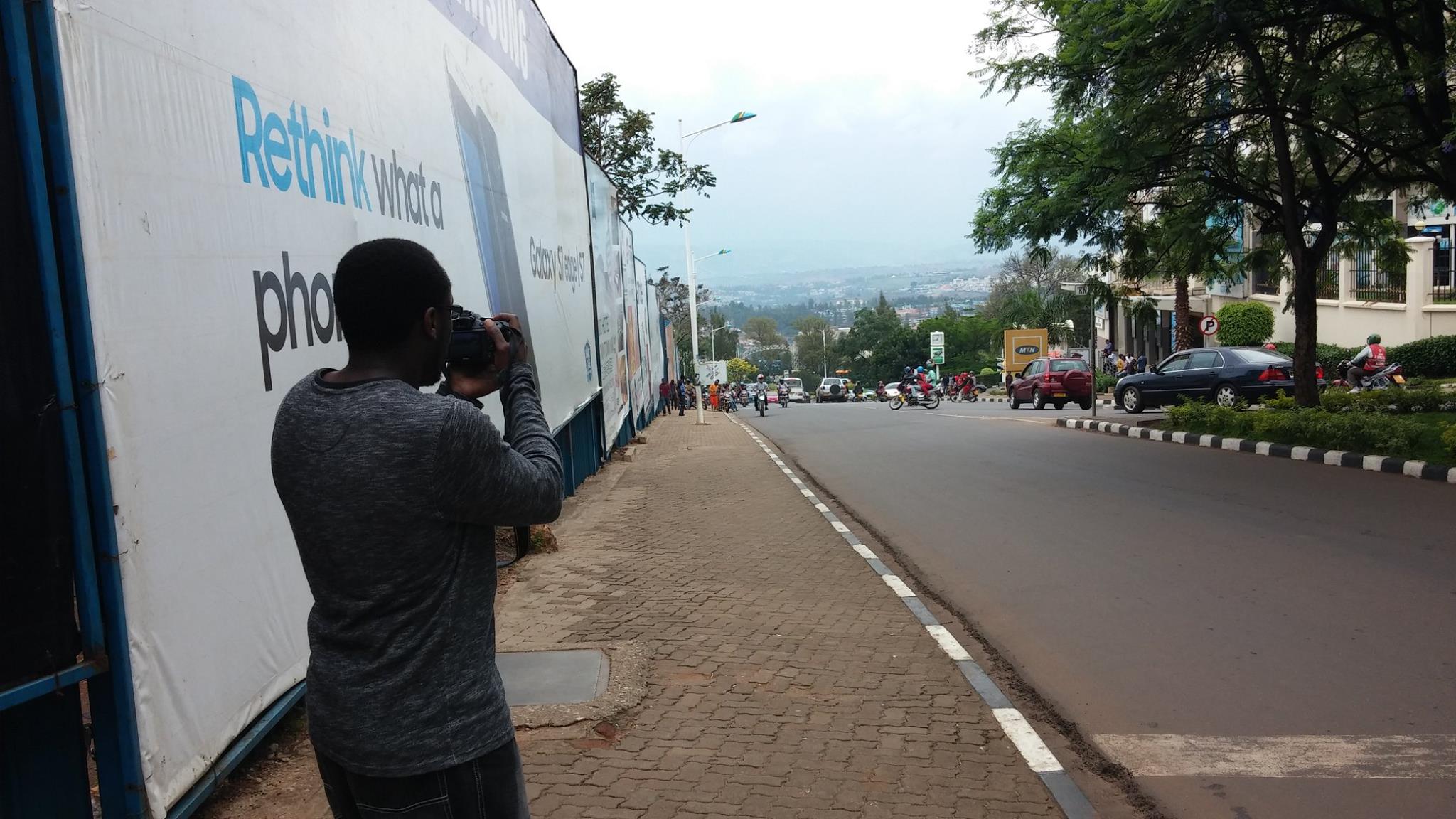Fear—I feel you, I see you, I hear you, I sense you, I even touch you. You penetrate my soul just enough to consume me. Your goal isn’t to kill nor pillage nor degrade nor degenerate. Your goal is to control. Control my mind, my body, and my soul. Control enough for me not to move forward in my journey of liberation. Control enough to cloud my vision of prosperity and optimism. Your insidious and subtle ways and mode of behaving envelops so violently toward my consciousness to such a degree that I’m dragged through life. You help turn me into a war-like creature that brings battle to everything that I know–even myself. You help me to keep my neighbor’s children starving and my environment sickly in need. But what is your nature, I might ask? You are neither a thing, person, or place. You are neither an institution nor a program. Yet you infect as much as you create. You are universal in abandonment of all that is precious, sacred, valuable, and real. You are the poison that fills the void in human civilization. You are the disease of the mind that contaminates everything into destitution. And worse yet you cannot be blamed!
I see you in the most remote of places. In the classroom, on the radio, in an ant hill, in courtrooms, and holy altars. You come and go as you please—just enough to leave damage. All the negativity, violence, and indifference in the world are simply the products of your work. In Western society you mask yourself in mediocrity. In the Third World you wear the mask of poverty. All the “isms” in the world—sexism, racism, classism—are all your most successful projects. You force humans to look at themselves in the mirror of their reality only to see staring back at them a wretched creature too deplorable to even look at. No national borders can contain you. Bombs cannot obliterate you. Activism cannot stop you. Religions cannot erase you. Governments thrive on you. Sadly in dire times money depends on you. Your essence stifles critical thinking and usurps personal initiative and responsibility. Worse yet, you have become a religion—a philosophy to live by. You help human beings to mobilize themselves into gated communities under security alarms in private properties embodied within invisible walls.
Your greatest allure is death—the end of the superficial and the beginning of the reincarnate. When all else fails in your pursuits you invoke the notion of death—the very thing that plagues the sleeping heart, mind, and soul. Your work in war, genocide, rape, murder, and the atrocities done to the plants and animals on earth remind us all too often of the certainty of you. But death symbolizes your last confrontation. The last powerful war you can wage on the subconscious of individuals. Your cousins—worry, anxiety, and doubt—play with death amongst the minds of your victims. But none of them use it so well and accomplish so greatly. Your meddling with the concept of death awards you the highest accolade of suffering in the world. You motivate the weak to conceive their journey of life to be primarily for security and comfort sake. You isolate human beings from their distant and close relatives in suspicion and envy. You help us to identify ourselves based on petty constructs like race, ethnicity, nationality, political affiliations and social assemblies. You help create environments of greed, history of bloodshed, conditions of oppression, circumstances of pain and agony, ignorance, deserts brought by exploitation, and religions delivering false promises of the selfish desire for heaven and the ignorant dread of hell. You come and go as you please—destroying everything in your path. As easily as you can be erased you too can come back—and sometimes even for more. You grab hold of the heart and never let go. You leave no room for growth or wisdom or hope. You create the present into shadows in the same fashion that you make bleak the future and dark your past. You’re as general as air and water and yet as ubiquitous as time and energy.
Nothing can contain you—yet everything can conceive of you. You make strangers among family members. Abusers among loved ones. Enemies among nations. Greedy among the once-good at heart. And worse yet, you make sick among the able-body. Your work among the physically impaired and the malignancy of health confers you as the greatest curse known to humankind. You help multiply cancerous cells, raise blood pressures into hypertension, and progress flues, obesity, diabetes, and tumors. Your work retards the energetic compounds made to heal the body and prosper bodily outcomes from sickness to health. Your work makes stupid and foolish among men and women. You help limit people into complacency, mediocrity, and apathy—on their own volition. You cage them up in their own self-made prisons and dry up their seed for rehabilitation. You send them out into the world of confusion and contempt and force themselves to survive like animals fending for themselves. You help to motivate their societies and communities of people to think that an independent, survival mode is the only way for them to get by. You shattered their thoughts of grandeur for a reality in harmony to the ultimate ‘Good’. You turn them into pleasure maximizers and hedonistic beings as their means of coping with the world—a mechanism for self-pacifying. You tackled their spirits to the ground only for them to finally get up and acknowledge themselves merely as inanimate objects programmed to move through an existential space of chaos. You force them to consume without any end, learn like naïve children, forget as much as they accumulate, and struggle blindly without any purpose or meaning. And above all—they turned you into an idol for them to worship until death—which they call God.
Your most calculating role is hate—but you refuse to stop there—only knowing that you could do more. All the evil in the world wishes they were as powerful as you. You create a dichotomy in society among slave and slave-owner, exploiter and the exploited, the privileged and the oppressed. You move and flourish without care. You accomplish without regret or remorse. You are universal yet you enter into reality specifically and superficially. We are addicted to your tempting presence and embodying essence and respond to life as if we need you. You become so necessary that you become food to our starving bodies. You give human beings the excuse to idle along in life. You compel human beings to live impulsively, think irrationally and behave irresponsibly. The house you built is contained with rift, jealousy, and competition constructed on your solid foundation. You infect the minds of many and the hearts of the majority to confuse and beguile us into violence, subjugation and repression.
Alas, I found your enemy! It sought home and refuge under the rubble you left behind. It laid withered and unmoved under your scorching heat. Amidst the ashes of war, the bones of the slaughtered, the dried blood of dead bodies it remained still and ripe for its time in the world. There it has risen and resurrected the heart in the few of men and women alike. It is unlimited in its potential and unbounded in its creativity. It is as timeless as it is infinite. It turned your work of a wilderness of hate and war into a flourishing paradise of communion. It is your enemy not because of conflict but because of contrast. When it is alive you die. When it is conceived you don’t exist. Some call it different names like love, self-enlightenment, peace—but its definition remains the same. And yet, it requires a more careful use of language. Laying weak and small it was kept alive by the smiles of a small number and thoughts of only a few.
It knows nothing of discrimination and separation. It hides under no national flag, economic class, ethnic identity, racial group, traditional culture, or labeled religion. It sees the color of a human’s skin as no more significant than the color of his or her eyes. It doesn’t believe in custom, dogma, ritual, convention, habit, doctrine, institution, and other means to an end for one to get addicted to. It sees violence as an ignorant attempt to solve disagreement. It sees family spiritually holistic and not akin to blood. Money cannot buy it. Politicians cannot cater to it. Pastors cannot teach it. Lawyers cannot defend it. Armies cannot guard it. It chooses not to compete but to create. It is a beauty of the spirit whose miraculous light blinds the ill-hated, fear-driven, impulsive-obsessed, and the materialistic consumer. It understands that freedom is internal and not conditionally-based on external circumstances. It changes its language from “desire” to “aspiration”, “comfort” to “liberation”, “success” to “peace”. It eludes the majority not because of its complexity but because of its simplicity. While you exist mortally—it exists immortally. That is how it remains victorious in your last confrontation and battle with death.
It knows how you are created—out of greed and selfishness. So in turn it helps the individual take a different route. It transcends the mediocre away from a life of dependency and subjection into a walk of life that is pure in empowerment and strength. It goes beyond the impermanent things of this world intrinsically powered by wisdom and guided by self-control. The way it defeats the like of you and the work you are determined to leave behind is by constant self-abnegation and thought. Violence cannot subvert it. No human institution or establishment can change it. People cannot coerce or manipulate it. No price tag can be put on it. It is in the world but not of the world. It surrenders to nothing else but the oneness that is everything—the source where its essence comes from. It goes beyond the senses like the quiet green valleys that lay low and the still waters that flow. It cleanses the body, mind, and soul with a balance of truth, beauty, and, above all, justice.
Its work in the world erases national borders, lowers national flags, empties corporate offices, closes down governments with the sign of “out of order”, and destroys bombs, artillery, and the machines of war. Its only commandment is to love unconditionally, live peacefully, create profoundly. It gives up sadness, addiction, weakness, and unhappiness when it gives up the self—the ego that humans constructed of themselves melodramatically of past events. But few actually embody and take in the radiance of its power. This power that it operates is of pure liberation and self-cleansing. But it comes with a cost. A sacrifice of worldly desire is its price along with a non-attachment of impermanent and temporal things of this world. Great teachers, divine saints, holy prophets and spiritual avatars of the past walked this earth teaching of its essence and beauty. But because of your work and tendencies they were killed, removed, or marginalized after having done part of their work. And worse, their lives were constructed in institutions propagating fear and ignorance. But their message still resides and is kept alive with echoes of a few. In the midst of death life persists. In the midst of untruth truth persists. In the midst of darkness light exists. Thus, as long as you are kept alive your enemy will still be here. As long as you are perceived as a fatalistic reality and seemingly invincible its profound power and essence will lurk in your shadows, amid your ruins, amongst your drudgery.

 I am the Third World. I am a product of the so-called Developing World. I am from the most disclosed, marginalized parts of modern-day societies. We know we were never meant to count. We know our stories are but a footnote in global history. I see my light and presence in this discourse–however such conversations are limited. It’s now time that I turn my work’s attention to it. No matter how I build my résumé or the connections I make along the way or the added credits to the list in my growing, budding career here in the United State of America I must continue. No matter the luxuries at home, the car I drive, the clothes I wear, the food I eat, the compensation rendered from my employer or the perishable and non-perishable things I consume as a consumer I must evolve. I must continue and evolve to and through Third World narratives.
I am the Third World. I am a product of the so-called Developing World. I am from the most disclosed, marginalized parts of modern-day societies. We know we were never meant to count. We know our stories are but a footnote in global history. I see my light and presence in this discourse–however such conversations are limited. It’s now time that I turn my work’s attention to it. No matter how I build my résumé or the connections I make along the way or the added credits to the list in my growing, budding career here in the United State of America I must continue. No matter the luxuries at home, the car I drive, the clothes I wear, the food I eat, the compensation rendered from my employer or the perishable and non-perishable things I consume as a consumer I must evolve. I must continue and evolve to and through Third World narratives.

